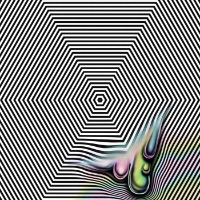- LP
- Recommended
- Back In
Moulay Ahmed El Hassani
Atlas Electric
Hive Mind
- Cat No: HMRLP3
- updated:2021-06-11
ビンテージ・ワールド・ミュージック発掘のディープなリリースで注目のブライトンのHIVE MIND。
Track List
-
A1. Li Nssak Nssah
-
A2. Yak Ennas Mlklil Darou Labas
-
A3. Ould Lhram
-
B1. Fache Ainik Anta
-
B2. Ana Mazal Kanabghik
-
B3. Dnya Yakhlik
-
C1. Ya Li Hjarni
-
C2. Addabtini Mahantini
-
C3. Mi Hanna Dada
-
D1. Lklam Lakhar
-
D2. Ya Lmmima Matabkich Hada Hali
-
D3. Loukan Fik Lkhir
Moulay Ahmed ElHassani is practically unknown outside of his home country of Morocco where he's released over 50 albums on cassette and CD over the past 30 years, however Hive Mind Records seek to remedy that situation with the release of this compilation featuring songs originally released on Ahmed's own label, Sawt el Hassani, between 2005 and 2012.
Ahmed writes his own songs, plays all instruments himself, records and self produces at his home studio in Beni Mellal. His unique sound takes influence from a variety of Moroccan folk forms, particularly the Izlan and Ahidous styles of the Amazigh people of the mid-Atlas region. Ahmed has blended these styles with the rai and chaabi that were popular across the country through his youth. The resulting sound is like a twenty-first century folk music for a people caught somewhere between a vision of their own idealised pastoral past and a turbo charged, technologically driven urban future. Ahmed has embraced new musical technologies and his songs are made up of complex, polyrhythmic drum machine patterns, subtle loops, washes of new age synth, heavily vocodered male and female duet vocals, and his signature psychedelic microtonal guitar playing. His songs are sometimes gentle and melancholic, and sometimes more upbeat, but always deeply lyrical and melodic, and all feature lyrics in Amazigh and Arabic that deal with social issues and universal themes of love and loss.
Ahmed writes his own songs, plays all instruments himself, records and self produces at his home studio in Beni Mellal. His unique sound takes influence from a variety of Moroccan folk forms, particularly the Izlan and Ahidous styles of the Amazigh people of the mid-Atlas region. Ahmed has blended these styles with the rai and chaabi that were popular across the country through his youth. The resulting sound is like a twenty-first century folk music for a people caught somewhere between a vision of their own idealised pastoral past and a turbo charged, technologically driven urban future. Ahmed has embraced new musical technologies and his songs are made up of complex, polyrhythmic drum machine patterns, subtle loops, washes of new age synth, heavily vocodered male and female duet vocals, and his signature psychedelic microtonal guitar playing. His songs are sometimes gentle and melancholic, and sometimes more upbeat, but always deeply lyrical and melodic, and all feature lyrics in Amazigh and Arabic that deal with social issues and universal themes of love and loss.



